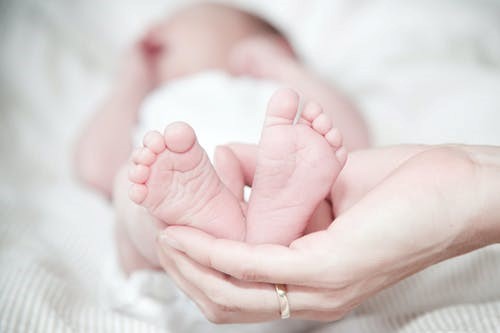Your Pain Relief Options for Labour
By Ellie Rayner
Labour can be painful, but it is important to be open-minded as the intensity differs from woman to woman and even from labour to labour. You might already have clear ideas in your mind about what pain relief you want or do not want but sometimes some methods do not work on the day, so it is good to have an overview of all of the options available to you. There is a range of different options available including supportive care, alternative therapies and medical drugs if needed.

Self-Help Techniques
Firstly, self-help techniques are crucial and can be enough for many women.
Just attending antenatal classes and learning about labour can be helpful, as these can enable you to feel more in control. Position has a big impact on your comfort in labour, so try different positions and use movement such as rocking or swaying. Providing you are not intolerant it is completely safe to take paracetamol in pregnancy and it has been shown to help in early labour. Baths and showers are also particularly good in early labour, or ‘the latent phase’ of labour and your midwife will encourage you to try these methods.
Using Water for Labour
Some women find that labouring in water helps them to relax and makes labour less painful. A birth pool is quite large and deep so enables you to be mobile and move freely which can help encourage labour to progress. Birth pools are commonly found in birth centres and even some labour wards and if you are planning a homebirth you can hire or buy a birth pool. You can choose whether to birth your baby in the water or get out for the pushing phase and this is entirely up to you.
TENS
You could try a TENS machine; this stands for Transcutaneous Electrical Nerve Stimulation. It is a small electronic device with sticky pads that you attach to your lower back to help reduce pain by sending out little electrical pulses. This triggers natural endorphins and blocks pain signals to the brain. You can hire or buy a TENS machine if your hospital maternity unit does not provide these. They are particularly helpful in early labour but have not been shown to be effective in active labour and you cannot use it with water.
Gas and Air
Gas and Air, or Entonox, is delivered though a mouthpiece. You control this yourself and it usually takes 15-20 seconds to work. It works best by taking slow, deep breaths throughout your contraction. It can really help to make contractions more bearable and causes no harm to your baby. Some women find it makes them light-headed, nauseous or tired, but it wears off very quickly once you take a few breaths of normal air. You might also get a dry mouth so take regular sips of water. It routinely available in all birthplace settings and it can be used in conjunction with all other methods of pain relief.
Pethidine and Diamorphine
If you feel you need something stronger, then your midwife can give you an injection of either Pethidine or Diamorphine administered into your thigh muscle. It takes around 20 minutes for this drug to work and its effects can last for 2-4 hours. These drugs can help you to relax and cope better with contractions. They do cause you to feel drowsy and they do cross the placenta, so they are not recommended or given if your baby’s birth is close. They may make your baby drowsy and a little slow to respond or they may delay their first feed.
Epidural
The most complete and effective pain relief available is an Epidural. An Anaesthetist can only administer this to you on a consultant-led unit. A fine tube is inserted into your back close to the nerves that supply the womb so that local anaesthetic can be administered throughout the duration of labour. For most women this will provide complete pain relief. You or your midwife can ‘top-up’ the epidural with a small pump to keep you comfortable and it stays in place until after your placenta is delivered and any stitching has been completed. They often make your legs heavy so that you cannot walk, although some units now offer mobile epidurals. In general, they give very effective pain relief for labour, however around 1 in 8 women will still require additional pain relief. Epidurals can drop your blood pressure so you will have a cannula sited to provide extra fluid and you are likely to have a catheter in the bladder, as you will not be able to feel when you need to pass urine. Your baby will be continuously monitored for 20-30 minutes after the anaesthetic is administered and after each additional top-up. Your blood pressure will also be recorded hourly.
As you can see, there are a range of different options available to you, and it is important to discuss with your birth partner in advance if and when any of these would be considered. It would be advisable to include your choices on your birth preference document but remember this is not set in stone and you can change your mind at any time.
About the Author
Dr Ellie Rayner is a practicing Obstetrician and Gynaecologist and founder of The Maternity Collective.
She is the only Obstetrician to offer private and group, expert-led Antenatal and Hypnobirthing Classes both Online and face-to-face. She is passionate about providing parent-centred, evidence-based care for all pregnancies and supports all methods of birth.
The Maternity Collective provide complete online antenatal and birth preparation courses led by a team of NHS healthcare professionals, including a Community Midwife, Obstetrician, Internationally Board-Certified Lactation Consultant (IBCLC) and Newborn Sleep and Behaviour Expert. Their 7-hour online course of 37 videos has been undertaken by more than 4200 parents to date and has fanatic reviews.
